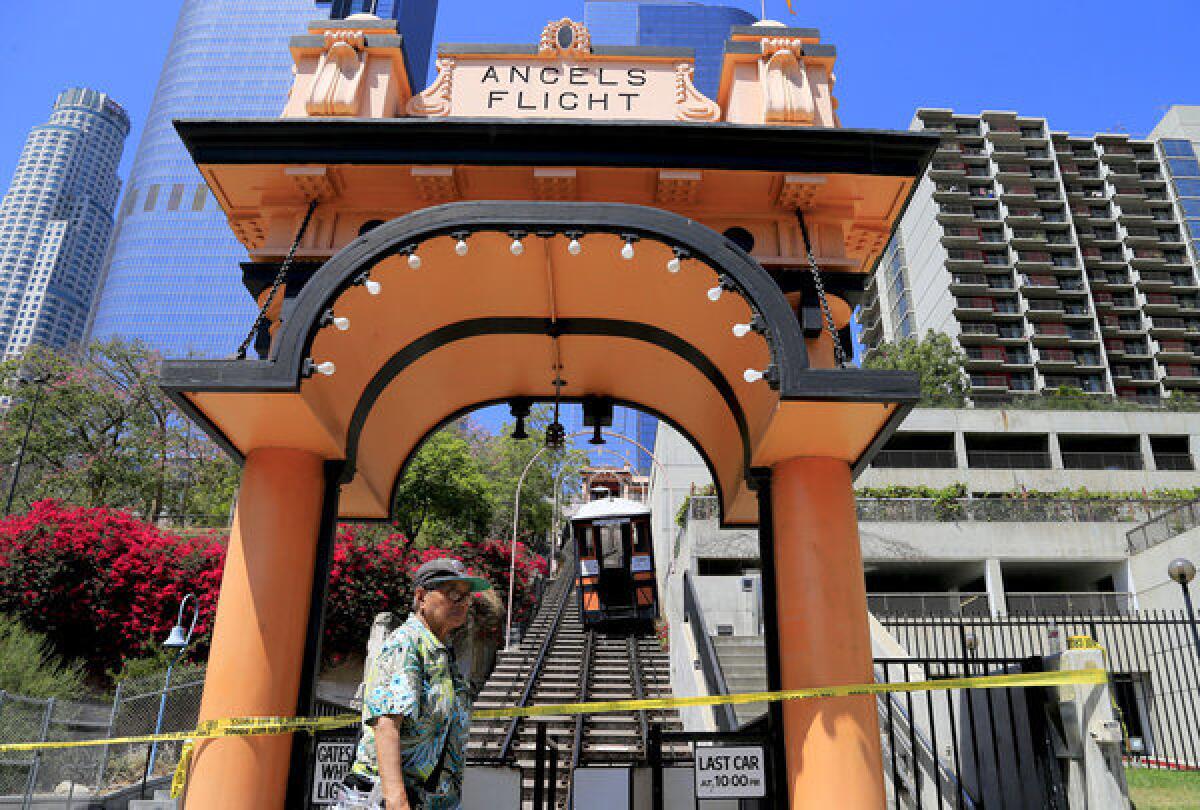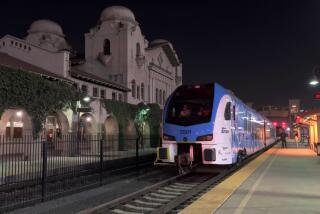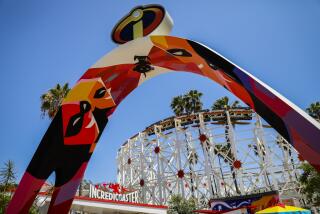Angels Flight does not have suitable evacuation routes, NTSB says

A passenger stranded on the Angels Flight railway downtown was seen on video crawling on all fours from one of the cars after the funicular derailed last month, according to the National Transportation Safety Board.
The federal report released Thursday detailed “urgent” safety recommendations for the historic railway, which runs between the Hill Street shopping district and Bunker Hill.
The funicular, billed as the shortest in the world, does not have suitable evacuation routes -- walkways, railings or guide ropes -- to prevent passengers or emergency rescue personnel from falling about 25 feet onto the sidewalk below, the report said.
ANGELS FLIGHT: Read the report
On Sept. 5, the downward-moving car, named Sinai, derailed near the middle of the track. The operator saw the car was stopped but was unaware it had derailed, the report said. The cars were manually restarted twice in an attempt to move them to their respective gates, but they stopped both times.
“The operator then recognized a derailment had occurred and notified senior Angels Flight management of the derailment,” the NTSB said.
Angels Flight operators did not notify the National Response Center or call 911 for assistance, according to the report. It was a bystander, the report said, who finally called the fire department to report the accident.
One passenger was assisted off the derailed car and five were escorted from the upper car by fire officials. No one was injured.
For months before the derailment, Angels Flight operators had been using a tree branch to override a safety system to prevent unintended stops, which were occurring multiple times during each trip at the time of the accident, according to the NTSB.
The report said operators had broken off a branch from a nearby tree and had wedged it to keep the start button depressed, overriding the safety feature. Senior Angels Flight management officials were aware of the practice, the operator at the time of the crash told investigators.
The report detailed several other “urgent” recommendations, including preventing excessive wheel and track wear, maintaining emergency stop systems and ensuring that safety systems are not bypassed. The report also recommended that operators develop evacuation routes for passengers and adjust entrance and exit gate height to prevent passenger ejection.
The California Public Utilities Commission, which inspects the railway, will have the final say on when Angels Flight operations can resume.
The probable cause of the accident has not been determined, the NTSB said.
In a statement, an Angels Flight representative said they have been working on a corrective plan with the CPUC since mid-September.
Angels Flight carries passengers up and down a steep incline between Hill and Olive streets. The 298-foot rail line originally opened in 1901, operating alongside the 3rd Street tunnel until 1969. It reopened in 1996 in its current location.
The railway was shut down after a fatal accident in 2001 that killed an 83-year-old passenger and injured seven others when Sinai accelerated down the hill and crashed into the second car, Olivet.
Federal investigators concluded that faulty mechanical and brake systems, combined with weak oversight, led to the crash. The board recommended a series of emergency provisions and that the CPUC independently verify the railway met industry standards.
Angels Flight reopened on March 15, 2010, but was not required by the CPUC to comply with all of the NTSB’s recommendations.
The railway was rebuilt entirely in 2009, with several layers of safety systems to prevent such accidents, according to Angels Flight President John Welborne. After the $3.5-million overhaul, the funicular reopened in March 2010.
It was briefly shut down in June 2010 after a car was seen operating with an open gate and again in 2011 because of wheel deterioration.
ALSO:
Missing patient not a victim of foul play, family spokesman says
Brown OKs higher fees for high-demand community college classes
Hannah Anderson says abductor James DiMaggio ‘had a crush on me’
Twitter: @Sam_Schaefer
More to Read
Sign up for Essential California
The most important California stories and recommendations in your inbox every morning.
You may occasionally receive promotional content from the Los Angeles Times.











